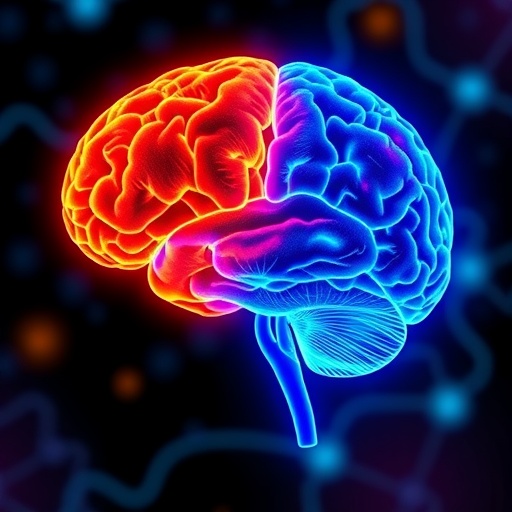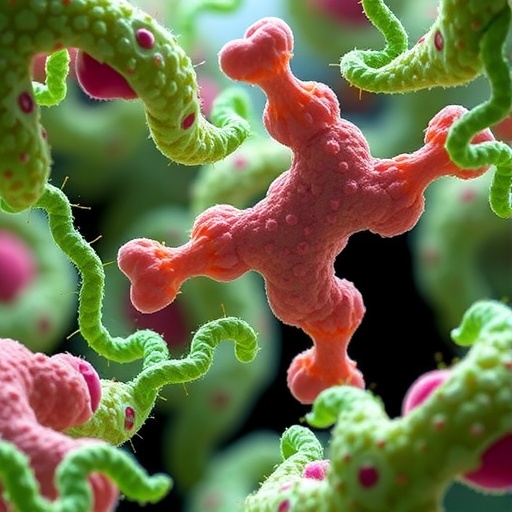Neurodegenerative disorders have long posed one of the most daunting challenges in modern medicine. These diseases, marked by relentless neuronal degeneration, lead to a tragic and irreversible decline in cognitive, motor, and sensory functions. While the global burden of neurodegenerative diseases (NDDs) such as Alzheimer’s, Parkinson’s, and Huntington’s continues to escalate, therapeutic progress has been painstakingly slow. A recent comprehensive review published in Nature Metabolism sheds promising light on a novel class of treatments that could revolutionize how we approach these devastating conditions. The spotlight now turns to incretin-based therapeutics, notably glucagon-like peptide 1 receptor (GLP-1R) agonists and dual agonists targeting both GLP-1 and gastric inhibitory polypeptide receptors (GIPR).
Traditionally, incretin mimetics were developed to combat metabolic disorders like obesity and type 2 diabetes, where they have demonstrated robust results in glucose regulation and weight management. However, emerging evidence suggests these agents possess multifaceted properties that extend well beyond metabolic control, especially within the central nervous system. The intersection between metabolic dysfunction and neurodegeneration is increasingly recognized, with insulin resistance and impaired brain energy metabolism implicated in the pathogenesis of many NDDs. In this context, the neurotrophic and neuroprotective effects of incretin-based drugs offer a tantalizing new avenue for intervention.
One of the pivotal challenges in treating NDDs lies in their complex and multifactorial pathology. Unlike diseases caused by a single, well-defined malfunction, neurodegenerative disorders encompass aberrations in protein aggregation, mitochondrial dysfunction, synaptic degradation, and neuroinflammation. Conventional drug development programs have typically targeted one pathological hallmark, such as amyloid plaques in Alzheimer’s or alpha-synuclein in Parkinson’s, often with disappointing clinical trial outcomes. In contrast, incretin-based therapies exert pleiotropic actions, modulating several pathological processes simultaneously, which might explain their emerging appeal as candidate disease-modifying agents.
.adsslot_QIvWPBqrkY{ width:728px !important; height:90px !important; }
@media (max-width:1199px) { .adsslot_QIvWPBqrkY{ width:468px !important; height:60px !important; } }
@media (max-width:767px) { .adsslot_QIvWPBqrkY{ width:320px !important; height:50px !important; } }
ADVERTISEMENT
Critical to these agents’ potential is their ability to cross the blood-brain barrier (BBB), a notoriously selective shield that limits drug access to neuronal tissue. GLP-1 receptor agonists have demonstrated favorable penetration into the central nervous system, where they engage receptor-mediated mechanisms that can attenuate neuroinflammation—a pervasive driver of neuronal injury. By dampening microglial activation and reducing pro-inflammatory cytokine levels, these therapies might not only halt but possibly reverse neurodegenerative cascades. This anti-inflammatory effect is particularly encouraging given the mounting evidence that chronic inflammation exacerbates neurodegeneration across multiple disorders.
Furthermore, incretin mimetics influence neuronal energy metabolism by enhancing insulin signaling pathways in the brain, thereby promoting glucose utilization and mitochondrial function. Energy deficits are a hallmark of many NDDs; impaired cellular bioenergetics can accelerate synaptic failure and neuronal death. By improving metabolic efficiency within neurons, GLP-1R and GLP-1R/GIPR dual agonists offer a direct means to boost cellular resilience against degenerative insults. This metabolic boost may also preserve synaptic plasticity, the neural substrate of learning and memory which deteriorates progressively in these diseases.
The preclinical data, although still in nascent stages, showcases a consistent pattern. Animal models of Alzheimer’s and Parkinson’s treated with incretin-based drugs reveal reduced amyloid accumulation, less tau hyperphosphorylation, and improved motor and cognitive performance outcomes compared to untreated controls. These results underscore the multifunctional capacity of these drugs to address key neuropathological drivers simultaneously. Notably, dual agonists offer a therapeutic synergy by concurrently activating GLP-1 and GIP receptors, neurons and glial cells alike benefiting from this complementary stimulation seem to exhibit enhanced neuroprotection.
Despite these encouraging insights, the translation of preclinical promise into clinical reality remains complex. Initial human trials have delivered mixed but hopeful results. While some studies report cognitive improvements and slowed disease progression, others highlight challenges including dosage optimization, interindividual variability in treatment response, and long-term safety profiles. These uncertainties underscore the need for larger, well-powered clinical trials that can definitively establish efficacy and refine treatment protocols.
Technological strides in drug design are also poised to enhance the clinical value of incretin-based therapies. Next-generation incretin mimetics are engineered for improved pharmacokinetics and enhanced brain penetration, optimizing their therapeutic window. Such advancements may not only amplify neuroprotective benefits but also reduce systemic side effects often seen with injectable formulations. Oral and oromucosal delivery systems are being explored to improve patient compliance, a critical factor given the chronic nature of NDD management.
Beyond their direct impact on neurons, incretin therapies also exert systemic effects that may indirectly benefit neurodegeneration. Improved peripheral glucose homeostasis reduces systemic inflammation and oxidative stress, both contributors to neural damage. These systemic metabolic improvements could synergize with direct brain effects to slow or halt disease progression more effectively than traditional mono-targeted treatments.
The potential repositioning of incretin mimetics in the neurodegenerative disease space reflects a broader paradigm shift towards multi-targeted therapeutic strategies in complex disorders. This integrative approach acknowledges the intricate biological networks involved and moves away from the “one drug, one target” dogma that has dominated the field. By combining metabolic, inflammatory, and neurotrophic benefits, incretin-based drugs embody a holistic strategy that could transform patient outcomes.
As research intensifies, future studies may unravel additional mechanisms by which GLP-1R and GIPR activation modulates neuronal health. Questions remain about optimal treatment timing, whether early intervention achieves superior neuroprotection, and how these agents interact with existing pharmacotherapies. Understanding the interplay between incretin pathways and other molecular cascades implicated in neurodegeneration could pave the way for combinatorial therapies that harness synergistic effects.
Subject of Research: Incretin-based therapeutics as disease-modifying treatments for neurodegenerative diseases.
Article Title: Incretin-based therapeutics for the treatment of neurodegenerative diseases.
Article References:
Vear, A., Heneka, M.T. & Clemmensen, C. Incretin-based therapeutics for the treatment of neurodegenerative diseases. Nat Metab 7, 679–696 (2025). https://doi.org/10.1038/s42255-025-01263-4
Image Credits: AI Generated
DOI: https://doi.org/10.1038/s42255-025-01263-4
Tags: Alzheimer’s disease therapeuticsbrain energy metabolism and insulin resistancecomprehensive review on incretin therapiesdual agonists for NDDsGLP-1 receptor agonistsincretin-based therapiesmetabolic dysfunction and neurodegenerationNature Metabolism research findingsneurodegenerative diseases treatmentneuroprotective effects of incretinsnovel therapeutic approaches for NDDsParkinson’s disease treatment options





